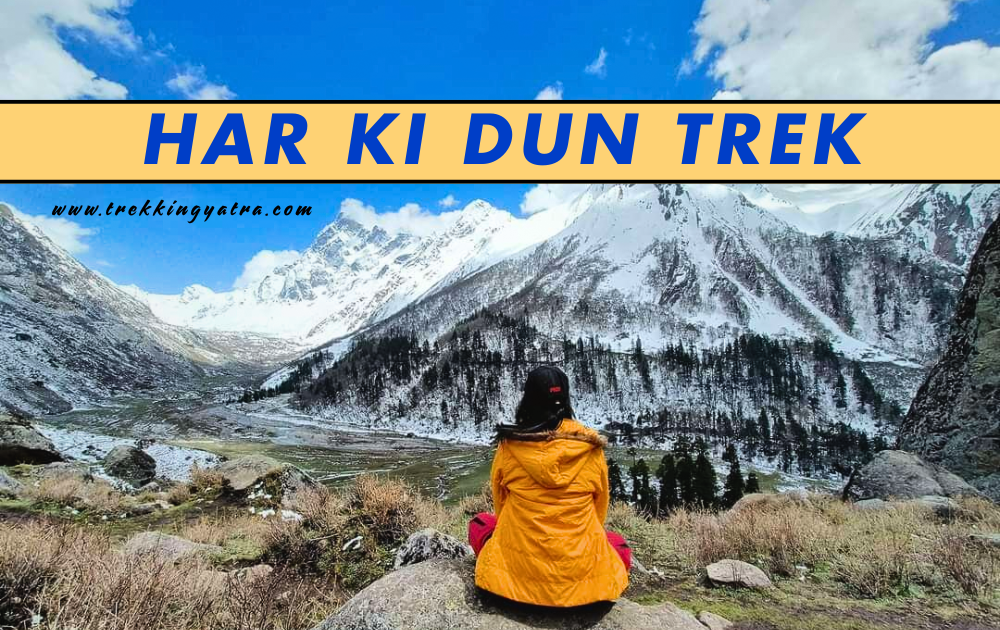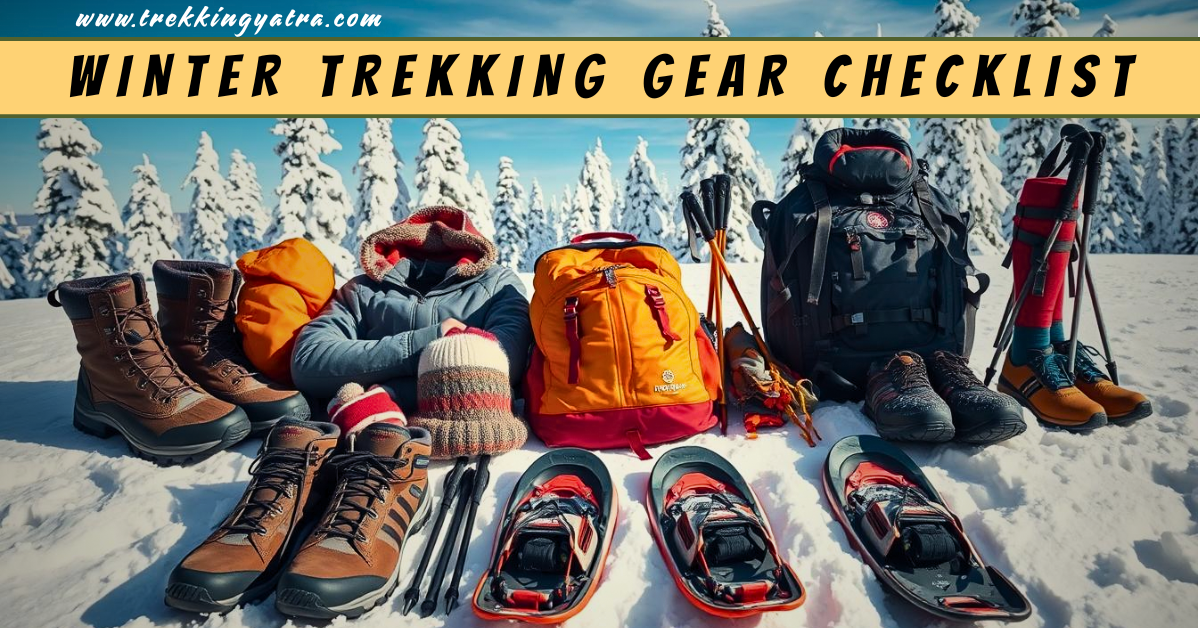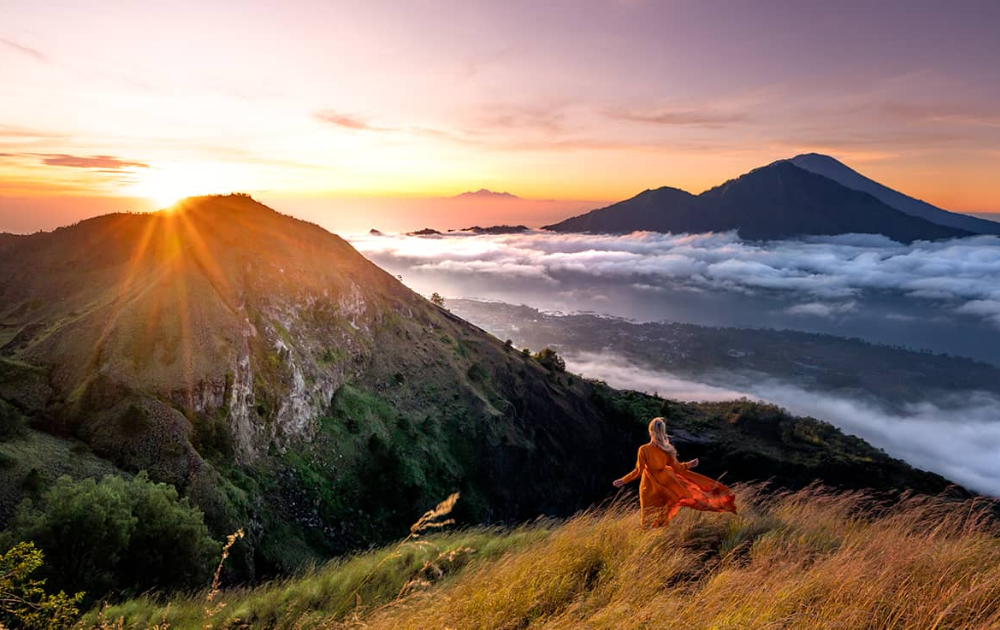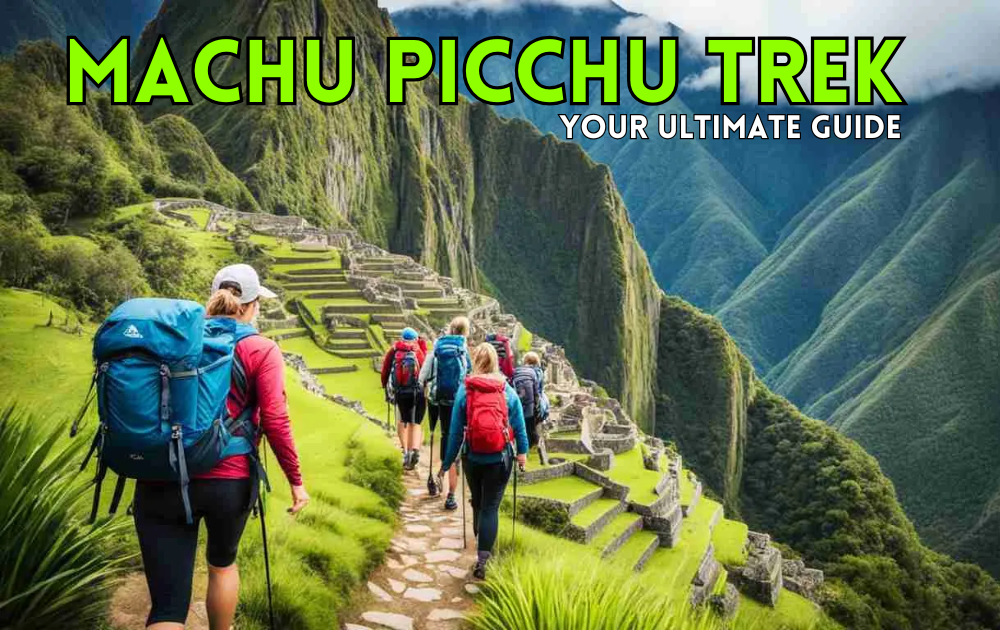🌄 Introduction – Welcome to the Valley of Gods
The Har Ki Dun Trek, fondly known as the “Valley of Gods”, is one of the most scenic and culturally rich Himalayan treks in Uttarakhand. Hidden in the Garhwal Himalayas, this cradle-shaped valley offers snow-capped peaks, ancient villages, pine forests, and breathtaking meadows that seem straight out of a fairy tale.
Located at an altitude of 11,675 feet (3,556 meters), the trail offers stunning views of the Swargarohini, Jaundhar, and Bandarpoonch peaks. What makes Har Ki Dun special isn’t just its beauty but also its mythology—it’s believed to be the path the Pandavas took to reach heaven.
In this detailed guide, we’ll cover everything you need to know for your Har Ki Dun Trek 2025 – including route maps, itineraries, cost breakdown, gear list, best time to visit, travel tips, and more.
🧭 Overview of Har Ki Dun Trek
| Detail | Information |
|---|---|
| Location | Govind National Park, Uttarkashi District, Uttarakhand |
| Altitude | 11,675 ft (3,556 m) |
| Trek Distance | ~47 km (round trip) |
| Duration | 6–7 Days |
| Difficulty Level | Easy to Moderate |
| Starting Point | Sankri Village |
| Best Season | April to June & October to early December |
| Nearest Railway Station | Dehradun |
| Nearest Airport | Jolly Grant Airport, Dehradun |
| Total Cost (Approx.) | ₹9,000 – ₹12,000 per person |
🏕️ Har Ki Dun Trek Itinerary 2025 (7 Days)
Let’s dive into the day-wise itinerary for your perfect Himalayan adventure:
🗓️ Day 1 – Dehradun to Sankri (Drive – 200 km / 8–9 hours)
Your journey begins from Dehradun, the gateway to the Garhwal Himalayas. From here, you’ll drive to Sankri, a small and charming village located at an altitude of 6,400 ft.
Along the way, you’ll pass through scenic towns like Mori, Purola, and Naugaon. The road winds through pine forests, apple orchards, and the crystal-clear Tons River.
Stay: Overnight in a guesthouse or homestay in Sankri.
Tip: Reach Dehradun early in the morning and book a shared cab with fellow trekkers to reduce cost.
🗓️ Day 2 – Sankri to Taluka (Drive – 12 km) → Trek to Seema/Osla (14 km / 6–7 hrs)
A short bumpy ride from Sankri takes you to Taluka, the starting point of the trek. From here, your real journey begins!
The trail from Taluka to Seema/Osla runs along the Tons River, crossing wooden bridges and through thick forests of walnut, deodar, and pine trees. You’ll encounter small villages and maybe even some locals carrying wooden baskets filled with produce.
Altitude Gain: 6,400 ft → 8,200 ft
Stay: Camp near Seema or Osla village.
Highlights: Wooden temples, mountain hamlets, and riverside camping.
🗓️ Day 3 – Seema/Osla to Har Ki Dun Valley (12 km / 6 hrs)
This is one of the most beautiful stretches of the trek. The path ascends gradually through alpine meadows, with snowy peaks peeking through dense forests. As you climb higher, the Swargarohini peak dominates the skyline.
When you finally reach the Har Ki Dun valley, you’ll be surrounded by towering mountains, glacial streams, and fields of wildflowers.
Altitude Gain: 8,200 ft → 11,675 ft
Stay: Camp at the Har Ki Dun base.
Highlights: View of Jaundhar Glacier and the Swargarohini group of peaks.
🗓️ Day 4 – Explore Har Ki Dun Valley (Acclimatization / Rest Day)
Spend the day exploring the majestic valley. You can hike to Maninda Tal (a small alpine lake), visit ancient temples, or just relax near the riverbanks surrounded by snow.
Activities:
-
Short hike to Jaundhar Glacier viewpoint
-
Photography and birdwatching
-
Visit the local deity temple dedicated to Duryodhana (yes, villagers worship him!)
Stay: Camp at Har Ki Dun.
🗓️ Day 5 – Har Ki Dun to Osla/Seema (Trek Back – 12 km / 5 hrs)
Retrace your path back to Osla village. This downhill trail offers different perspectives of the valley, and you’ll get to interact with the locals who live simple yet fascinating mountain lives.
Stay: Camp or homestay in Osla.
🗓️ Day 6 – Osla to Sankri (14 km trek + 12 km drive)
Start early and descend back to Taluka. From there, drive back to Sankri. Enjoy your last night at the base village, celebrating your trek completion.
Stay: Guesthouse at Sankri.
Evening: Bonfire, local food, and music!
🗓️ Day 7 – Sankri to Dehradun (Drive – 200 km)
Bid farewell to the mountains as you head back to Dehradun with unforgettable memories.
Pro Tip: If you have an extra day, stay in Sankri or Mori for local exploration or short village walks.
🌤️ Best Time to Visit Har Ki Dun in 2025
| Month | Weather Condition | Highlights |
|---|---|---|
| April – June | Pleasant & green valley | Rhododendron blooms, clear skies |
| October – December | Snowfall begins | Winter wonderland experience |
| July – September | Avoid monsoon | Landslides & slippery trails |
The best time to visit Har Ki Dun is from April to June and October to early December. For snow lovers, mid-November is magical!
🥾 Trekking Essentials – What to Pack
🧳 Clothing:
-
2–3 full-sleeve T-shirts
-
2 trek pants (quick dry)
-
Thermal innerwear (1 pair)
-
Fleece jacket + down jacket
-
Woolen cap, gloves, and socks
🎒 Gear:
-
50–60L trekking backpack
-
Rain cover
-
Trekking shoes (waterproof)
-
Walking pole (optional but helpful)
-
Headlamp or flashlight
🩺 Miscellaneous:
-
Personal medication
-
Sunscreen (SPF 50+), sunglasses, lip balm
-
Water bottle + energy bars
-
Power bank & camera
💸 Har Ki Dun Trek Cost Breakdown (Approx. ₹9,000 – ₹12,000)
| Expense Type | Estimated Cost (₹) |
|---|---|
| Transportation (Dehradun ↔ Sankri) | 2,000 – 2,500 |
| Trek Package (6N/7D) | 7,000 – 9,000 |
| Rentals (trek gear) | 500 – 1,000 |
| Misc. Expenses | 500 – 800 |
| Total Estimate | 9,000 – 12,000 INR per person |
🧘♂️ Why Har Ki Dun is Called the Valley of Gods
According to Hindu mythology, the Har Ki Dun valley is said to be the route taken by the Pandavas on their final journey to heaven via the Swargarohini peak. The name literally means “Valley of the Gods”.
Villages like Osla still worship Duryodhana, believing he was once their protector. This fascinating blend of myth and mountain makes the trek not just scenic but spiritually enriching.
🐾 Flora & Fauna of Har Ki Dun Valley
Har Ki Dun is located within Govind Pashu Vihar National Park, home to diverse wildlife and vegetation.
🌿 Flora:
-
Deodar, Pine, Walnut, Oak trees
-
Alpine flowers, wild orchids, and rhododendrons
🦋 Fauna:
-
Himalayan black bear
-
Langur, barking deer
-
Snow leopard (rare sightings)
-
Colorful Himalayan birds
📸 Photography & Scenic Highlights
-
Morning Views: Sunrise over Swargarohini peaks 🌅
-
Riverside Walks: Tons River reflections
-
Village Life: Wooden houses, smiling locals
-
Night Skies: Milky Way visible on clear nights
Pro Tip: Carry a tripod for long exposure shots at the Har Ki Dun base.
🏡 Local Culture & Village Life
The people of Osla and Seema villages are simple, warm, and deeply spiritual. Their wooden houses with intricate carvings and traditional attire add charm to the trek.
Visitors can stay in homestays to experience Garhwali hospitality. Try local dishes like Mandua ki Roti and Aloo ke Gutke.
⚠️ Safety Tips for Har Ki Dun Trek
-
Acclimatize properly – Avoid rushing the climb.
-
Stay hydrated – Carry at least 2 liters of water daily.
-
Weather check – Always confirm local forecasts before the trek.
-
Avoid littering – Keep the Himalayas clean 🏔️.
-
Travel insurance – Always recommended for high-altitude treks.
🔗 Related Treks You Might Like
🙋♂️ FAQs about Har Ki Dun Trek 2025
Q1. Is the Har Ki Dun Trek suitable for beginners?
Yes, it’s one of the best beginner-friendly Himalayan treks with gradual ascents and well-marked trails.
Q2. Can I do the Har Ki Dun Trek solo?
You can, but joining a group or agency ensures safety and easier logistics.
Q3. Is the network available on the trek?
Limited network till Sankri. Beyond that, enjoy a digital detox!
Q4. How cold does it get in November?
Temperatures drop to -5°C at night, so carry warm layers.
Q5. Are permits required?
Yes, trekking permits are issued at Sankri as the area falls under Govind National Park.
✨ Conclusion – A Journey into the Heart of the Himalayas
The Har Ki Dun Trek is more than just a trek—it’s an experience of divine nature, mythology, and mountain simplicity. Whether you’re a beginner seeking your first Himalayan adventure or a nature lover chasing alpine beauty, this trail has everything: forests, rivers, snow peaks, and culture.
As you stand in the valley, surrounded by the mighty Swargarohini, you’ll feel why this place is called the Valley of Gods.
So, pack your bags, lace up your boots, and let Har Ki Dun 2025 be your gateway to heaven on earth.



